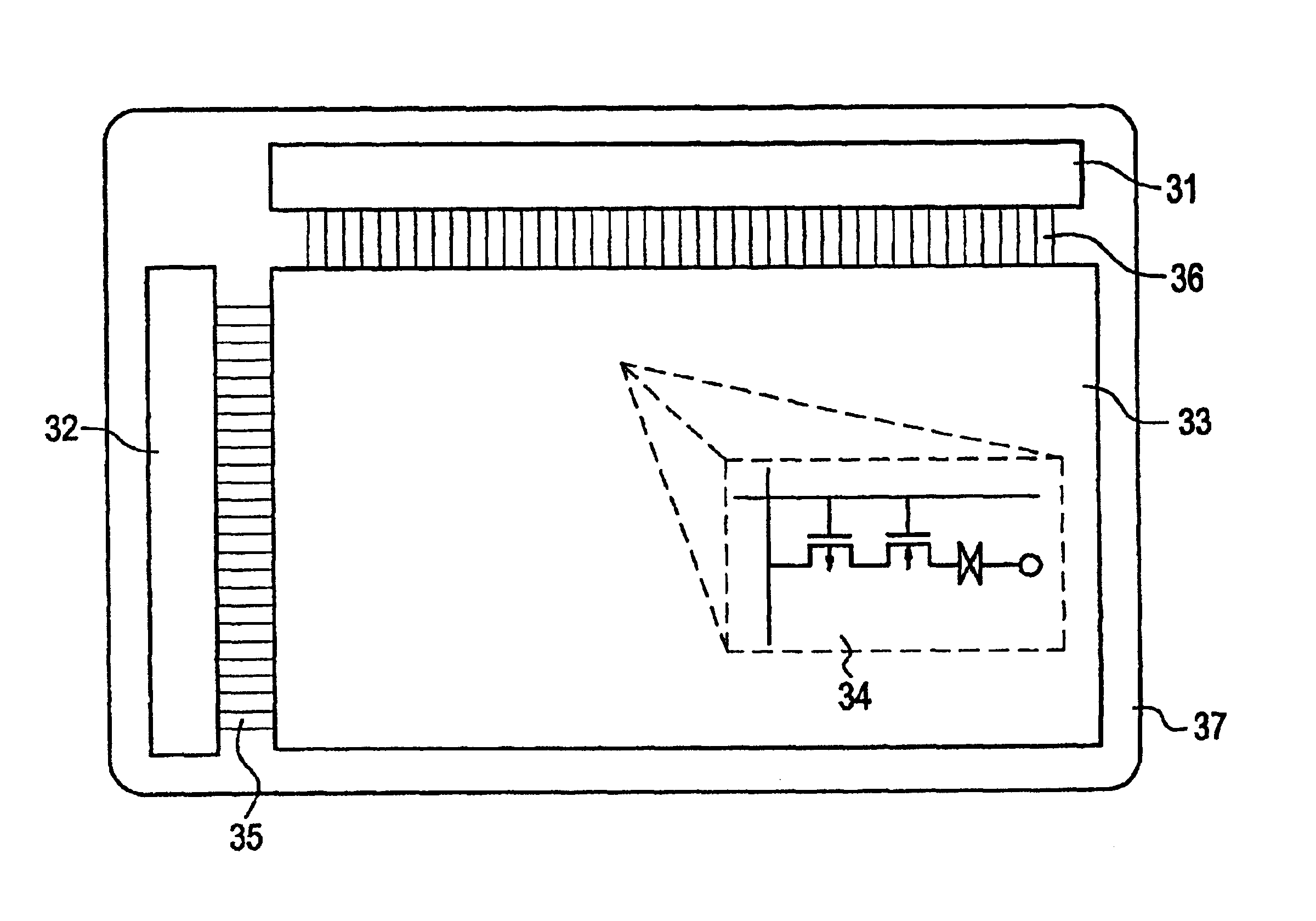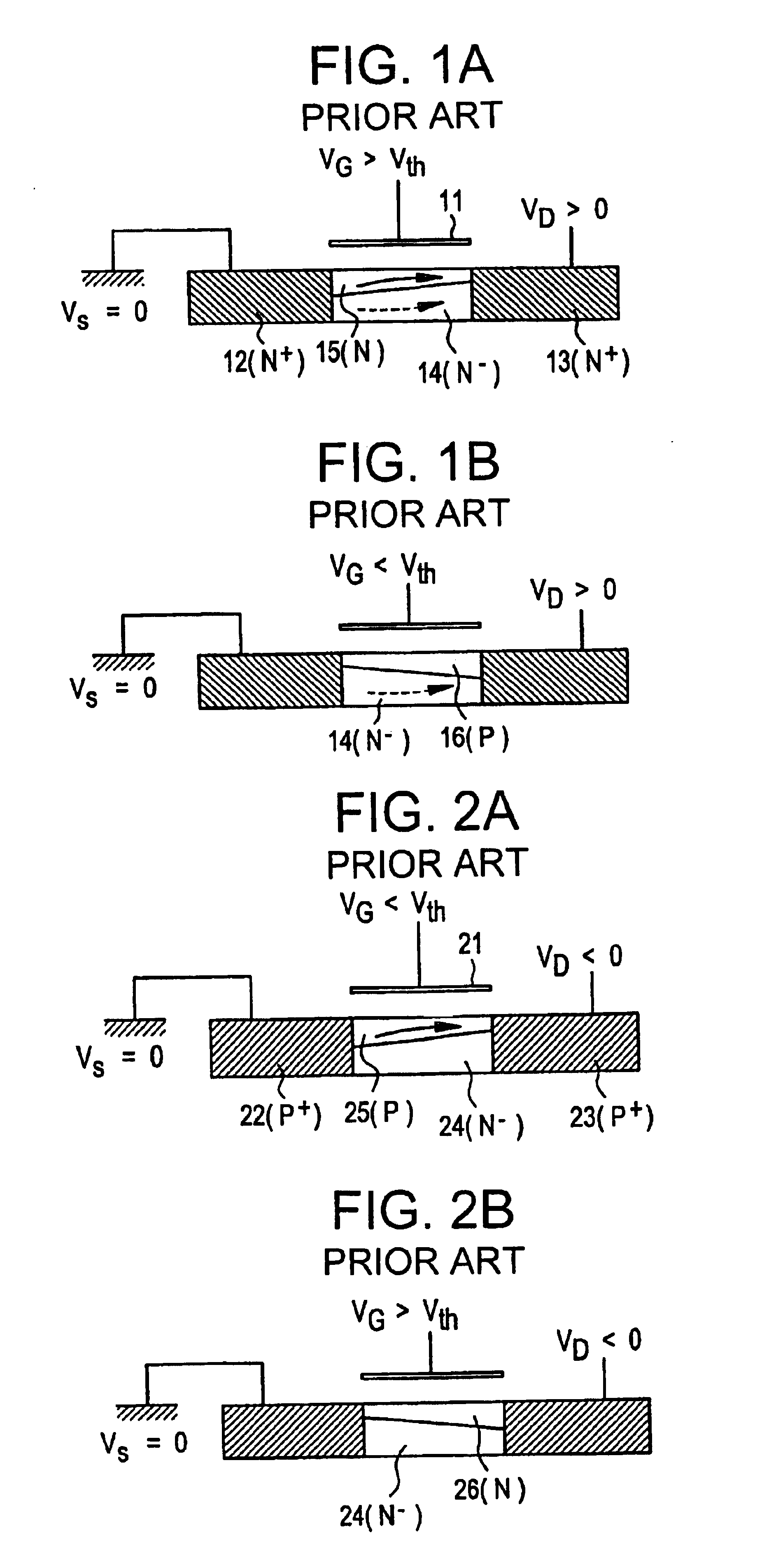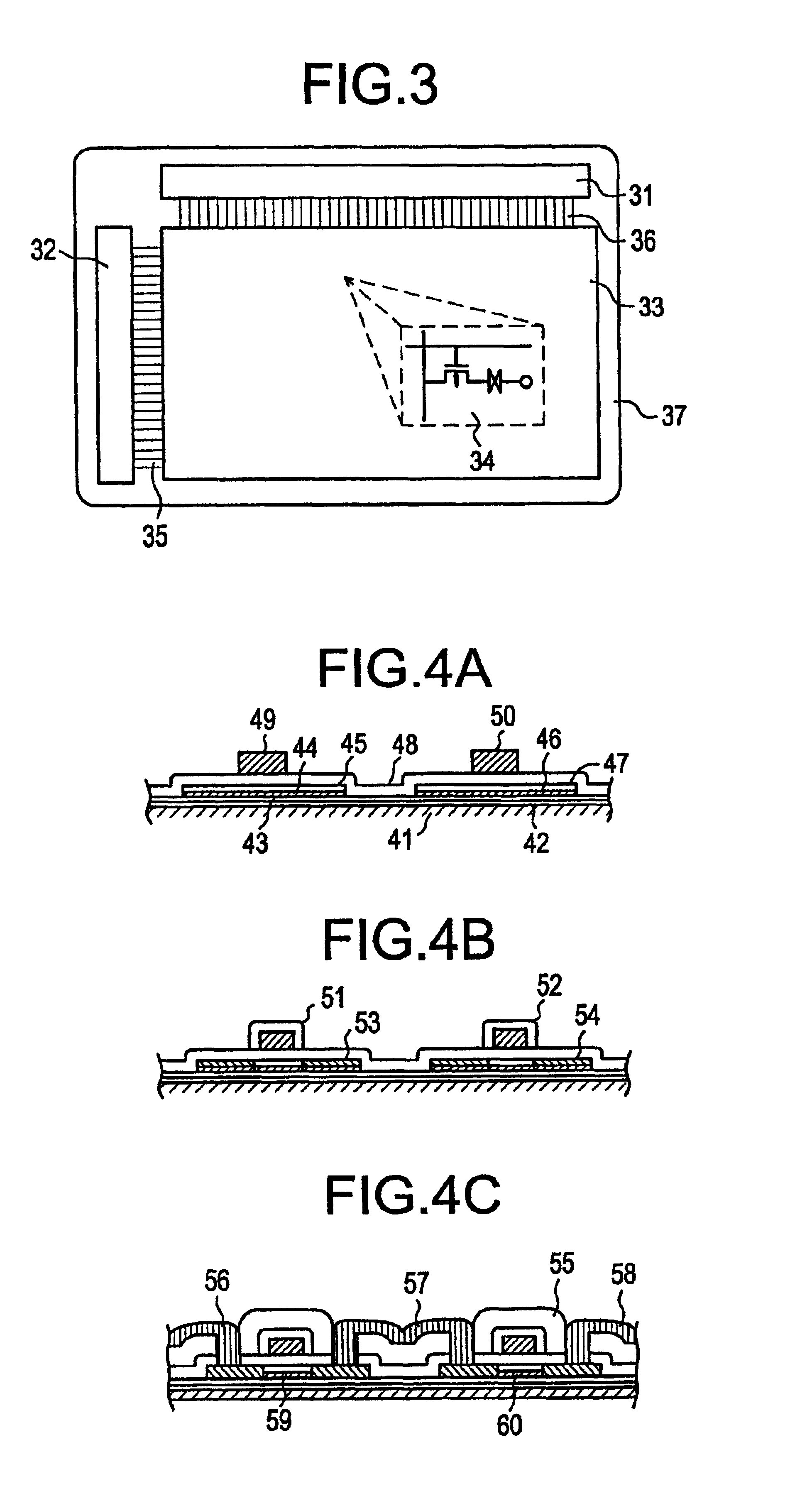Electric device, matrix device, electro-optical display device and semiconductor memory having thin-film transistors
a technology of semiconductor memory and matrix device, which is applied in the direction of static indicating device, identification means, instruments, etc., can solve the problems of reducing production yield, complex process, and configuration unsuitable for display devices, and achieves excellent reproducibility and stability of energy levels, and the process itself is quite simple.
- Summary
- Abstract
- Description
- Claims
- Application Information
AI Technical Summary
Benefits of technology
Problems solved by technology
Method used
Image
Examples
example 1
[0057]A CMOS circuit according to this EXAMPLE 1 of the present invention is described below by referring toFIG. 4, (A)-(C). An electric device in accordance with this EXAMPLE 1 is shown in FIG. 6 and comprises a pair of substrates, the CMOS circuit and a pixel electrode provided on one of the substrates, a transparent conductive film 72 provided on the other one of the substrates, and an electro-optical modulating layer 73 provided between the pixel electrode (said one of the substrates) and the transparent conductive film (the other one of the substrates). This circuit comprises a substrate 41 made of #7059 glass manufactured by Corning Co., Ltd. The substrate can be made from various other materials. From whatever material is the substrate made, the substrate must be so processed that no moving ions such as sodium ions enter semiconductor films. An ideal substrate is made of a synthesized quartz having a small alkalinity. If it is difficult to adopt this substrate for economical ...
example 2
[0070]FIG. 5, (A)-(E), illustrate successive steps performed to fabricate NMOS and PMOS devices according to the invention. In the present example, TFTs were fabricated by a high-temperature process. First, an undoped polysilicon film having a thickness of 100 to 500 nm, preferably 150 to 200 nm, was formed on an insulating substrate 61 of quartz by low-pressure CVD. The insulating substrate 61 was 105 mm wide, 105 mm long, and 1.1 mm thick. Then, the polysilicon film was oxidized in a dry, high-temperature oxygen ambient within a temperature range from 850 to 1100° C., preferably from 950 to 1050° C. In this way, a silicon oxide film 62 was formed on the insulating substrate (FIG. 5(A)).
[0071]An amorphous silicon film having a thickness of 100 to 1000 nm, preferably 350 to 700 nm, was formed from disilane by plasma-assisted CVD or low-pressure CVD. The substrate temperature was 350 to 450° C. The laminate was annealed for a long time at a temperature of 550 to 650° C., preferably 5...
PUM
| Property | Measurement | Unit |
|---|---|---|
| voltage | aaaaa | aaaaa |
| thickness | aaaaa | aaaaa |
| thickness | aaaaa | aaaaa |
Abstract
Description
Claims
Application Information
 Login to View More
Login to View More - R&D
- Intellectual Property
- Life Sciences
- Materials
- Tech Scout
- Unparalleled Data Quality
- Higher Quality Content
- 60% Fewer Hallucinations
Browse by: Latest US Patents, China's latest patents, Technical Efficacy Thesaurus, Application Domain, Technology Topic, Popular Technical Reports.
© 2025 PatSnap. All rights reserved.Legal|Privacy policy|Modern Slavery Act Transparency Statement|Sitemap|About US| Contact US: help@patsnap.com



